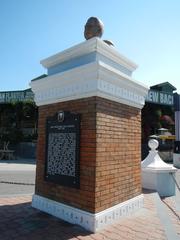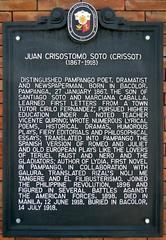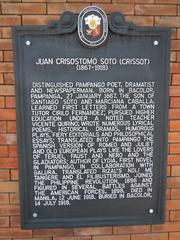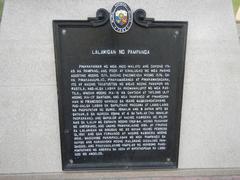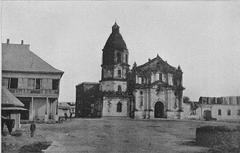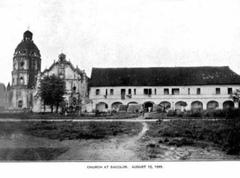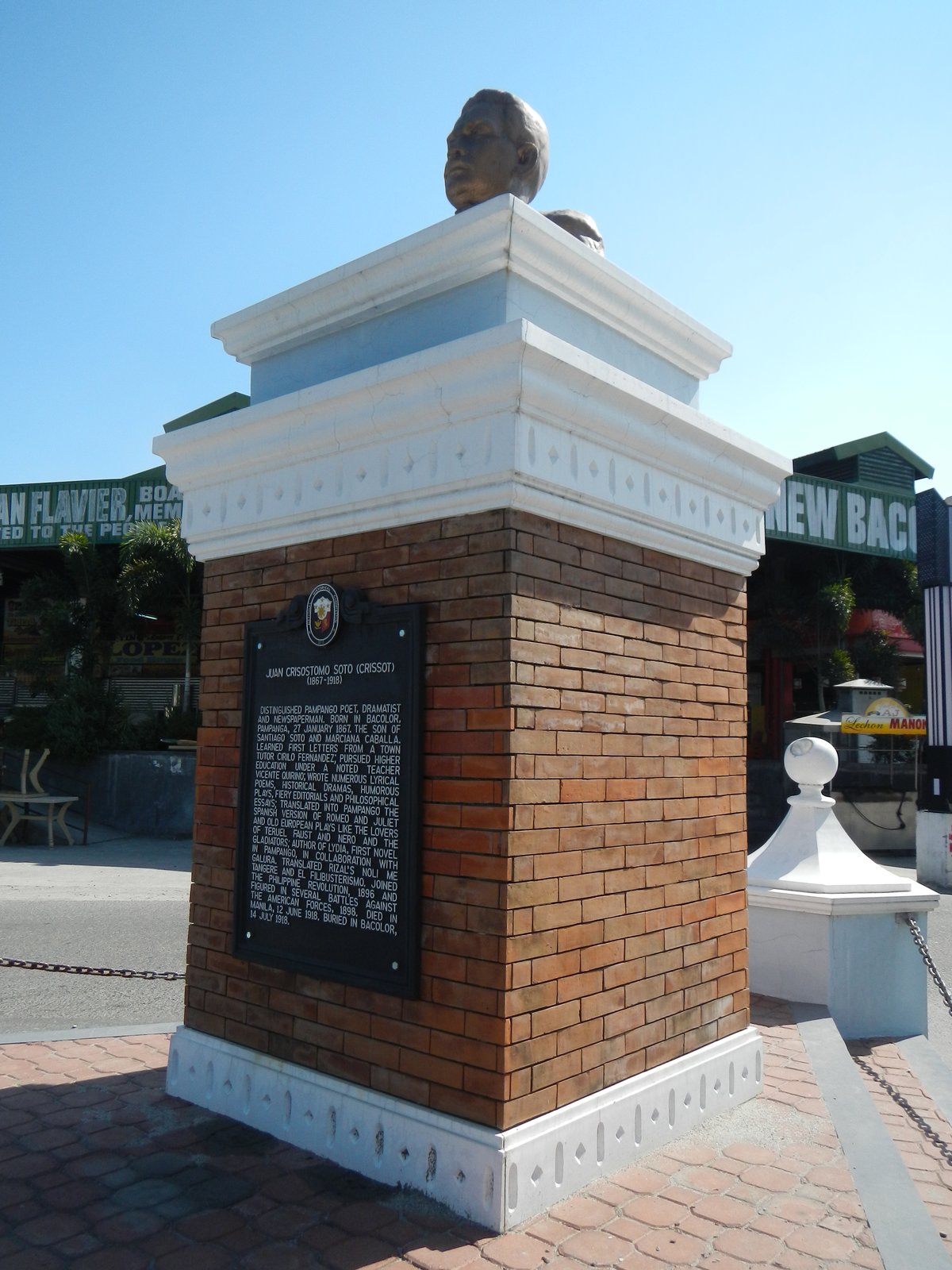
Juan Crisostomo Soto Historical Marker Bacolor: Visiting Hours, Tickets, and Travel Guide
Date: 14/06/2025
Introduction
Nestled in the historic town of Bacolor, Pampanga, the Juan Crisostomo Soto Historical Marker stands as a proud tribute to one of the Philippines’ most influential literary icons. Known by his pen name “Crissot,” Juan Crisostomo Soto is celebrated as the Father of Kapampangan Literature, whose prolific contributions in poetry, drama, and journalism have significantly shaped the cultural and literary identity of the Kapampangan people. Bacolor itself, with its deep historical roots—once serving as the provincial capital and briefly the capital of the Philippines during the British occupation—offers a compelling backdrop for this marker. Whether you are a history enthusiast, literature lover, or cultural traveler, this comprehensive guide will provide everything you need to plan a meaningful visit, including the marker’s location, visiting hours, cultural significance, and nearby attractions (NHCP, Mapcarta, Audiala).
Table of Contents
- Historical Context of Bacolor and Juan Crisostomo Soto
- Life and Legacy of Juan Crisostomo Soto (Crissot)
- Visiting the Juan Crisostomo Soto Historical Marker
- Cultural and Educational Significance
- Frequently Asked Questions (FAQ)
- Summary and Visitor Tips
- References
Historical Context of Bacolor and Juan Crisostomo Soto
Bacolor: A Center of Heritage
Bacolor, located in Central Luzon’s Pampanga province, is one of the oldest towns in the Philippines, established in 1571. Its strategic location along the Pasig-Potrero River made it a hub for trade and culture, and it notably served as the provincial capital and, during the British occupation (1762–1764), as the temporary capital of the Philippines. This rich history fostered a vibrant environment for arts and literature to flourish.
Kapampangan Literary Tradition
Bacolor is recognized as a heart of Kapampangan culture, with strong traditions in poetry, theater, and music. Its educational and artistic institutions, along with influential mentors, nurtured generations of Kapampangan writers and artists—including Juan Crisostomo Soto.
Life and Legacy of Juan Crisostomo Soto (Crissot)
Early Life and Education
Born on January 27, 1867, in Santa Ines, Bacolor, Soto was mentored by respected Kapampangan educators Cirilo Fernandez and Vicente Quirino. This strong educational foundation propelled him into a prolific literary career.
Literary Achievements
Soto’s works spanned lyrical poetry, dramas, humorous plays, editorials, and philosophical essays. He elevated Kapampangan literature by translating European classics such as “Romeo and Juliet,” “The Lovers of Teruel,” “Faust,” and “Nero and the Gladiators” into Kapampangan. Together with Felix Galura, he co-authored “Lydia,” the first Kapampangan novel. He also translated José Rizal’s “Noli Me Tangere” and “El Filibusterismo” to make these keystone works accessible to Kapampangan readers.
His zarzuela “Alang Dios!” (1901) is celebrated for its exploration of faith and resilience. Soto is also credited with pioneering the “Crissótan,” a Kapampangan poetic joust akin to the Tagalog “Balagtasan.”
Journalism and Revolution
In addition to his literary output, Soto was a journalist advocating for social reform and the rights of the Kapampangan people. He actively participated in the Philippine Revolution and the Philippine-American War, reflecting his deep patriotism.
Later Years
Soto continued his advocacy and literary work until his passing on June 12, 1918, in Manila. His remains are interred in Bacolor, where his legacy is honored by the community.
Visiting the Juan Crisostomo Soto Historical Marker
Location and Directions
The Juan Crisostomo Soto Historical Marker is prominently located near the Bacolor Town Plaza, just a short walk from the public market and the renowned San Guillermo Parish Church.
How to Get There:
- By Car: From Manila, take the North Luzon Expressway (NLEX), exit at San Fernando, and follow signs to Bacolor via Jose Abad Santos Avenue (JASA).
- By Public Transport: Buses from Manila (Cubao or Pasay terminals) pass through Bacolor. Disembark at the public market and walk or take a tricycle to the marker.
- On Foot: The marker is accessible from other historical attractions within Bacolor town.
Coordinates:
Latitude: 15.0192° N
Longitude: 120.6508° E
(Mapcarta)
Visiting Hours and Admission
- Hours: Open daily from 7:00 AM to 6:00 PM. For the best experience and safety, visit during daylight hours.
- Admission: Free. No ticket is required to view the marker.
Accessibility
The site is wheelchair accessible and close to parking areas. Some surrounding streets may have uneven terrain; assistance may be needed for visitors with limited mobility.
Visitor Facilities
While there are no dedicated facilities at the marker, nearby the Bacolor Town Plaza and Public Market offer restrooms, eateries, and convenience stores. Local restaurants serve authentic Kapampangan cuisine (Audiala).
Guided Tours and Events
There are no regular official guided tours for the marker, but local tourism offices and cultural groups occasionally organize heritage walks and special events, especially during festivals. The Crissot Festival, held annually, features poetry readings, performances, and commemorative ceremonies honoring Soto’s legacy.
Best Time to Visit
November to April offers the most pleasant weather. Visiting during local festivals—like the Feast of San Guillermo or the Crissot Festival—provides a richer cultural experience.
Cultural and Educational Significance
The marker serves as both a tribute to Soto’s literary contributions and a symbol of Bacolor’s resilience, especially after the devastation brought by the 1991 Mount Pinatubo eruption. It stands as a focal point for civic pride, Kapampangan identity, and educational outreach, inspiring new generations to appreciate local literature and history (NHCP).
Frequently Asked Questions (FAQ)
Where is the Juan Crisostomo Soto Historical Marker located?
Near Bacolor Town Plaza, a short walk from the public market and San Guillermo Parish Church.
What are the visiting hours?
Open daily from 7:00 AM to 6:00 PM.
Is there an entrance fee?
No, visiting the marker is free.
Are guided tours available?
Not regularly, but local tourism offices sometimes offer heritage tours that include the marker.
What other historical sites are nearby?
- San Guillermo Parish Church (The Sunken Church): Partially buried by lahar, this church is a symbol of Bacolor’s resilience.
- Museo de Bacolor: Exhibits on Bacolor’s history and the Mount Pinatubo eruption.
- Felix Galura Monument: Honors another Kapampangan literary figure.
- Simon de Anda Monument: Commemorates the Spanish Governor-General who moved the capital to Bacolor.
- Bacolor Public Market and Plaza: Experience local life and cuisine (Where in Pampanga).
Is the site accessible for people with disabilities?
Yes, though some surrounding areas may require assistance.
Summary and Visitor Tips
A visit to the Juan Crisostomo Soto Historical Marker is a journey into the heart of Kapampangan heritage. The marker, situated in Bacolor’s historic center, not only honors a literary luminary but also invites visitors to experience the enduring resilience and vibrant culture of the town. With free admission, proximity to other historical sites, and opportunities to participate in local festivals, exploring this landmark is an essential part of any trip to Pampanga. For an enhanced experience, utilize digital resources like the Audiala app, and consider joining community celebrations to fully immerse in Bacolor’s living history (NHCP, Mapcarta, Audiala).
References and Further Reading
- Crissot Bust: Juan Crisostomo Soto (Crissot)
- Juan Crisostomo Soto (Scribd)
- National Historical Commission of the Philippines
- Audiala: Bacolor Heritage Guide
- Where in Pampanga: Bacolor Travel Tips
- Mapcarta: Bacolor Map and Attractions
- Mapcarta: Bacolor Town Plaza
